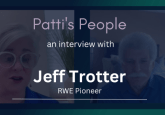Understanding external control arms: An interview with Dr Lewis Carpenter, Head of Real-World Evidence, Arcturis
Laura Dormer, Editor of The Evidence Base, speaks with Dr Lewis Carpenter, Head of Real-World Evidence, Arcturis, about External Control Arms.
You can view the entire video or view a specific question by entering ‘Fullscreen with Transcript’ or navigate via the ‘Visual Table of Contents’.
Questions:
- What is an external control arm, and when are they used?
- What are some of the key components to a successful external control arm?
- What is it that makes real-world data regulatory grade?
- What statistical methods are needed to ensure robust clinical insights?
- What are some of the key challenges when conducting an external control arm with RWD, and how is the RWE team at Arcturis seeking to overcome these?

Dr Lewis Carpenter
Head of Real-World Evidence
Arcturis
As Head of Real-World Evidence, Lewis leads a highly skilled team of medical statisticians and epidemiologists, and ultimately oversees the scientific quality and rigor of the company’s delivery of RWE insights to large pharmaceutical companies, biotechs, and contract research organizations. Leveraging the company’s access to rich, longitudinal anonymized electronic health records from NHS trusts, Lewis has overseen the development of numerous RWE projects providing vital insights for the development of new important therapeutics in oncology, cardiology and hematology.
Lewis has over a decade of experience in working with clinical data as a researcher and medical statistician, with specialist expertise in study design and analysis of retrospective, longitudinal real-world data. He holds a PhD in Life Sciences from the University of Hertfordshire and spent 3 years as a post-doctoral researcher at King’s College London, where he worked in inflammatory conditions, such as rheumatoid arthritis.
Prior to Arcturis, he had experience in pharmacoepidemiology working with large population datasets, such as CPRD and HES, as well as applying novel statistical methods to large observational cohorts. He has over 2000 citations from over 30 publications from high-impact medical journals, and has presented his research at numerous medical conferences.
Sponsorship for this interview was provided by Arcturis.





